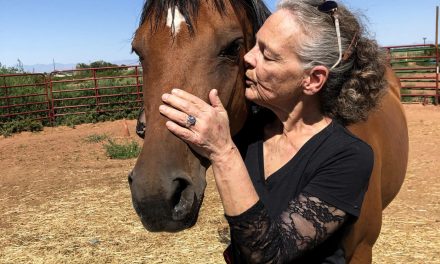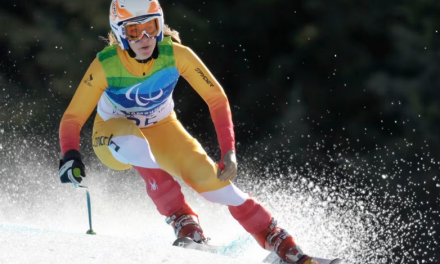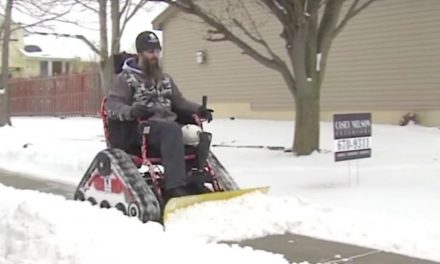My story begins with dreams of becoming a professional hockey player. Admittedly, my mother and father planted the seeds for this dream by teaching me to skate when I was four years old on a local pond. My first opportunity to skate with a team arrived at the age of six. I knew that I was in the right place the moment that my skates touched the ice. The next years included youth hockey, high school hockey, and then Junior A hockey after graduating from prep school. My goal was to play at the collegiate level and then professionally. Then, “bad fortune” struck.
On August 2, 2008, when rushing for an opposing player who had a breakaway, I caught him at the last second, but my skates caught the helmet of my goalie as he came out to play the puck, and I was sent in the air headfirst into the boards.
The impact from hitting the boards paralyzed me and I was rushed to a hospital in Methuen, Massachusetts. There the doctors found my condition to be so severe that they ordered a helicopter to airlift me to Boston, Massachusetts. However, severe thunder and lightening storms prevented the transport of patients. When this message came in, I was immediately rushed to Beth Israel Deaconess Hospital in Boston by ambulance. I spent five days in Beth Israel Hospital before being transported to the Spaulding Rehabilitation Center. I spent fifteen days in Spaulding before being released to home. My diagnosis was spinal shock and bruising along my spinal cord. I was able to walk, but with bad spasms and convolutions.
After being released from Spaulding Rehabilitation, I arrived at the Shaughnessy Kaplan Rehabilitation Center in Salem, Massachusetts. I had an amazing therapist at Shaughnessy Kaplan. Her husband was involved in a spinal cord accident so she was very in-tune with everything that I was going through. Unfortunately, Shaughnessy’s facility is in no position to offer spinal cord therapy treatments for people who are severely injured. After I had spent three weeks in the programs, my therapist called my mother and warned her that if I did not seek alternative treatment, that I would undoubtedly be in a wheelchair within two years. Doctors commonly agree that a spinal cord patient’s first six months of rehabilitation are crucial because of the swelling. By working to reduce swelling in the first six months, the chances for recovery are greatly increased. My family and I knew we had to act fast. I had a doctor’s appointment the following week and we were eager to hear what he had to say.
This appointment is unforgettable. I had one of the leading spinal-cord doctors from Beth Israel Hospital look into my parents and my eyes and tell us that within two next years, I would be confined to a wheelchair for the rest of my life. We left his office before he started another sentence. It was now a frantic hunt for someone who had a connection to a specialized spinal-cord treatment center. My prayers were answered in a matter of two weeks. My “good fortune” was the response from my family, including aunts, uncles, and cousins. My parents’ constant lessons for my brother and me were that the vehicle for the highest quality of life was commitment, diligence, and avoid procrastination.
My parents and brother responded to my accidents by immediately revealing all those qualities. Their support and encouragement gave me the strength and motivation to cleanse myself of the pending self-pity and to resume my fight for success, although in a much different arena. Then, my uncle rose to the challenge and through a friend connected me to the Miami Project to Cure Paralysis Center. No medical center offering this center’s specialized treatment for patients like myself existed in New England. In fact, the local doctors already discussed with my family and me my preparation for life in a wheel chair.
When I headed down to the Miami Project, the Doctors who were assigned to my case promised to do everything in their power to enable me to walk again. At that point, I promised myself that I would not stop until I walked again. I had a daily routine. I began each day driving one hour from Delray Beach to Miami for therapy. My intense therapy sessions lasted three to four hours and were followed by the hour drive back to Delray. Once I returned, I performed a 2-hour aquatic therapy routine, and then went to the local Gold’s Gym for 2 more hours to work on my balance and strength. By the end of the day, I was exhausted. But, because of this rigorous routine, I was able to regain my walking, limbs and movement. Within 9 months from my accident, I had regained my strength and mobility.
In May 2009, I was considered by doctors to be a “walking miracle” and was cleared to play hockey again in July 2009. I remember feeling so fortunate for this opportunity but sad at the same time that others at The Miami Project, in that single moment, could not be cleared to do the physical activities that they wanted to do. When I was attending rehabilitation at the Miami Project, my greatest lessons came from the other patients. I met the most courageous people whose hopes still shine bright despite being challenged by overwhelming physical disabilities. I learned the culture among people needing wheelchairs and their daily obstacles and frustrations. These people motivated me and allowed me never to feel sorry for myself. I promised myself “not to whine, not to complain and not to quit.” These people helped me achieve my goals and for that I am forever grateful.
During the summer of 2009, I had a rigorous training routine that I put myself through to ensure that I was in the best possible physical condition of my life. Because of this, I thought that another spinal cord injury could never happen to me. Several doctors, including the co-founder of the Miami Project, Dr. Barth Green, assured my family and me that I was no more susceptible for another spinal injury than anyone else.
However, on October 1, 2009, it happened again. I was skating around the net in practice when my skates caught my teammate’s skates. Instead of sliding into the boards feet first, which I had done hundreds of times, my feet got stuck, my upper body kept going, and I hit the boards headfirst. I was airlifted from Salem, NH to Boston Medical center where I was diagnosed with injuries to my thoracic vertebra. The thoracic vertebras are located in a different section of the spine than the cervical vertebras. No damages were found in the cervical part of my spine.
The doctors in Boston told me that if they were the doctors in Miami they also would have signed off on me. They said I had nothing to worry about when I chose to return to the ice and that I had a better chance of winning the lottery 5 times in a row than having two separate accidents totally unrelated. I would spend over a month in the hospital before being released to begin my outpatient therapy program.
In November, I started an intensive cutting edge outpatient program at Boston Medical Center. I knew that this time around was going to be a marathon and not a sprint. But around Christmas time, I began to show signs of movement in my legs and in my toes. This really helped me mentally because when you suffer from paralysis, any movement is good movement. I remember thinking to myself that I may actually beat this thing for a second time. Then on January 11, 2010 my worst fear happened for a third time.
My father used to drive me to therapy once a week. It was a cold morning but nothing unusual for January in New England. We were stopped at a red light on our way to therapy when a driver smashed in the rear of my father’s pickup truck. I remember being jolted forward and my head smashing into the dashboard. Once I came to, I tried to move the little movement I had in my legs but I couldn’t. At that moment, time stopped. It was a moment frozen in time and something I will never forget. I was immediately rushed to the hospital where doctors diagnosed me with re-injuring the thoracic area of my back. At that moment, I had to decide what to do, fight or flight if you will. I decided to fight and for a third time, try and beat paralysis.
It took me several months to finally come to grips with what had happened to my father and I. I didn’t know this when I was being rushed into the hospital but my dad was also admitted to the hospital and put into surgery. He had injured several vertebras in his lower back. To this day, he still struggles with his mobility and is currently living on disability. While some may choose to say “why me,” or, “why us,” my family and I decided to take action and help the paralysis community find a cure.
My third accident emphatically confirmed that I knew my life’s mission. Everyday that I spent inpatient at Boston Medical Center and everyday that I went to therapy, I saw a person who is worse off than I am. I promised myself after my second injury that I would speak with new “F words” and not the negative, unproductive “F word” that is so commonly used in society today. My new “F words” are: Family, Faith and Friends. Those three commitments are truly all that matter in life. I want to live my life being the best I can be at all three of these “F words.”
Since my third accident, I have dedicated myself to building The Thomas E. Smith Foundation to serve as a vehicle to help those suffering from paralysis. Through laying the groundwork for this foundation, I have taken the opportunity to speak as an advocate for patients with spinal-cord injuries, as well raising awareness around paralysis to people of all ages and from all walks of life. I am as comfortable with this mission as I was the first time I skated on the pond.




